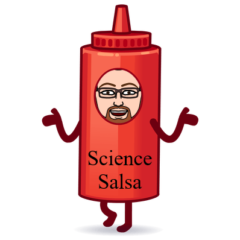
This week two newspapers featured school seminars that help graduate students communicate their science to general audiences. The Seattle Times featured Engage Science from University of Washington and the Long Island Newsday featured the Center for Communicating Science of Stony Brook University*. Those programs recognize a need for “communication literacy” on scientific education and represent an awesome professional (and personal) development tool for the students that take the seminars. I firmly believe scientists that like to talk about their research should be able to find a similar seminar or class elsewhere. There is a need for it, and there is a growing group of students acquiring communication training to pursue “non-traditional” science careers (now the majority of job opportunities) where the ability to communicate concisely and in plain English is very valuable.
“The goal of the [Engage Science] course, founded by graduate students, is to teach young scientists how to share their passions for cosmology, chemistry or evolutionary biology without putting people to sleep. The program is one of several springing up across the country, fueled by a new generation of researchers who see public outreach as integral to their jobs.” — Seattle Times
Those scientists will fulfill a key role by showing a more human scientist to the public, somebody non-scientist can understand and relate to. The need is there for those scientists who can communicate science effectively; experts need to bring the scientific consensus in Global Warming to a broader audience and they need to expose the hidden dangers of widespread use of antibiotics. Scientific literacy is not a luxury when those subjects can have such a big impact on people’s lives.
The other role for this bunch of scientists trained on presentation design, jargon removal and storytelling will be inside their research institutions. They will raise the bar for scientific presentations for scientific audiences.
“Though we typically perceive scientists in white lab coats conducting experiments, a critical part of their work involves giving lectures and making presentations.” Long Island Newsday
I spent so many years attending boring scientific talks that I forgot how to tell a story, and I forgot that the presentation is a lot more than the graphs or the slides. We need scientists trained in communication inside and outside academia. Luckily I got help from Engage Science at UW, and I think I am starting to get better at telling stories. I hope you agree. You can read my take on the lessons learned during the Engage seminar at “Bringing science back, one story at a time” and the invited post “Scientists are human too”
(*) The article is behind a pay-wall but excerpts of the text are available at the Center for Communicating Science Facebook page.
Related post:
Engage Science Students Blog Post: http://www.engage-science.com/
On the need of opportunities and rewards for science communication http://neurodojo.blogspot.com/2013/03/steering-into-skid-what-can-we-fix-with.html
The soap opera model of science communication, scientists as real people: http://neurodojo.blogspot.com/2013/03/blockbusters-and-telenovelas-models-for.html
